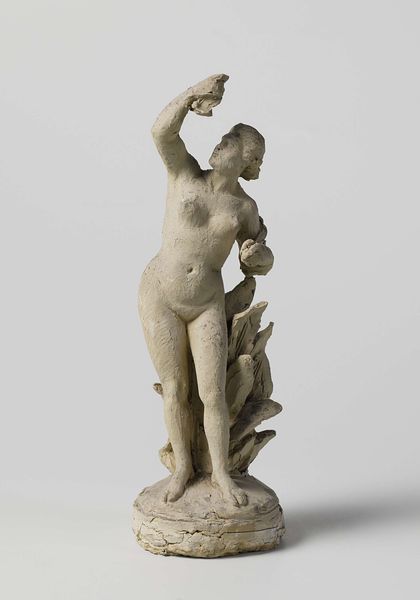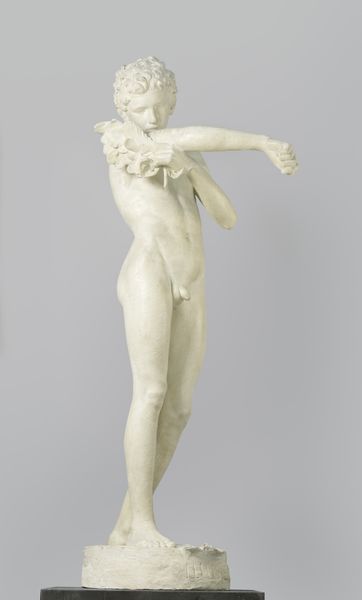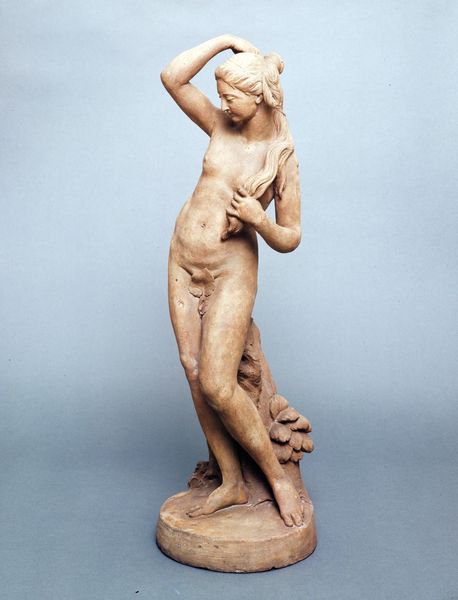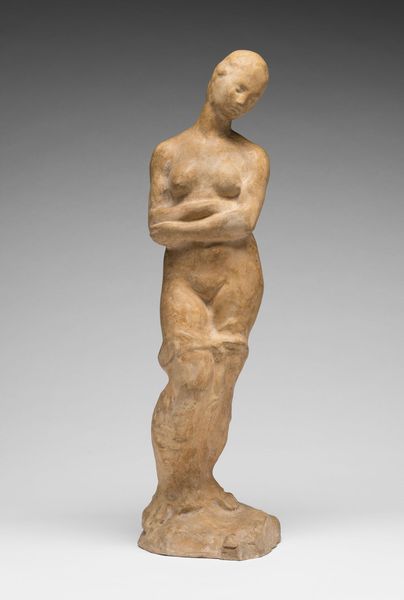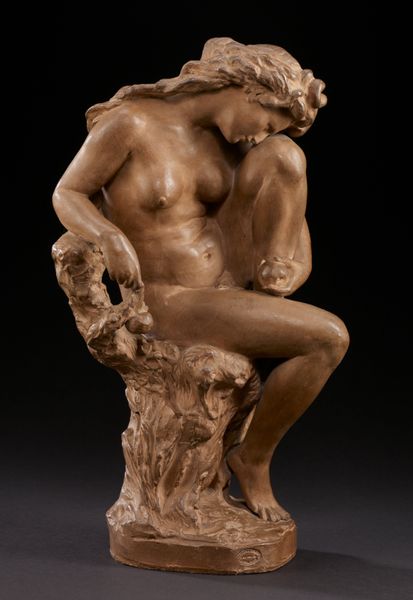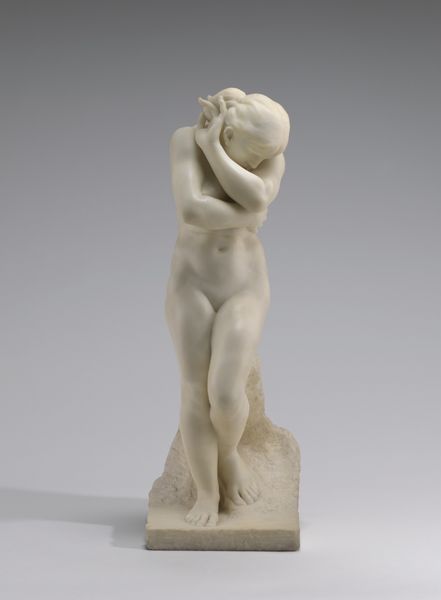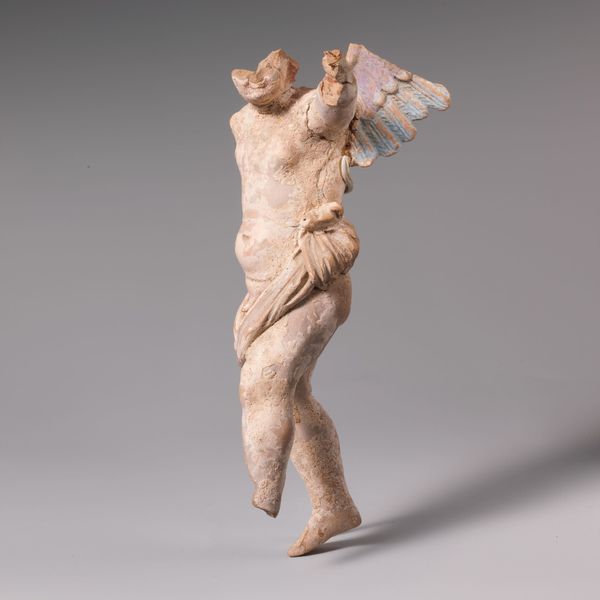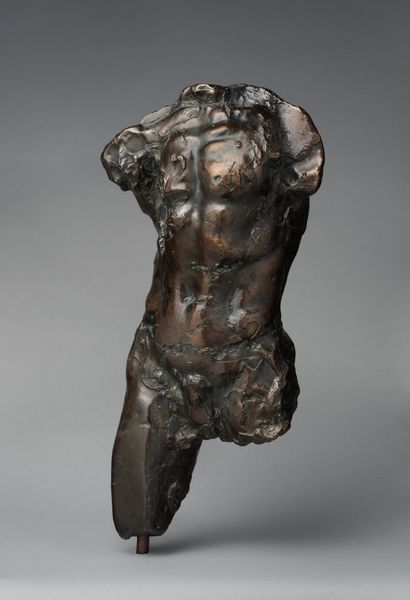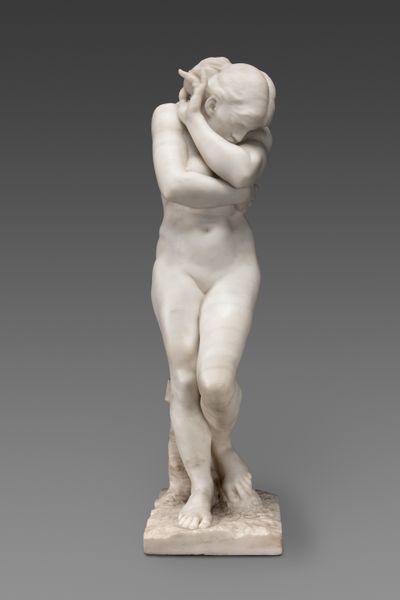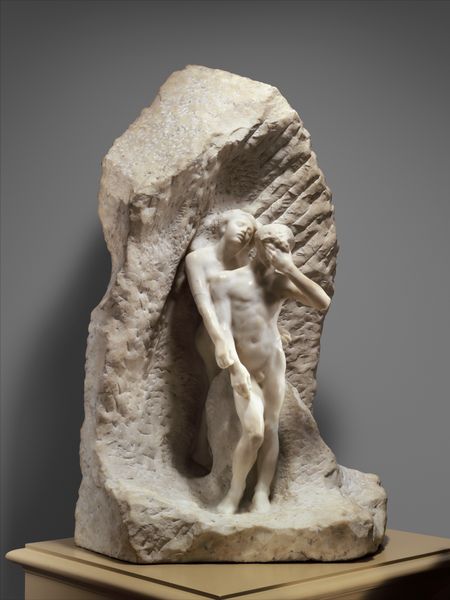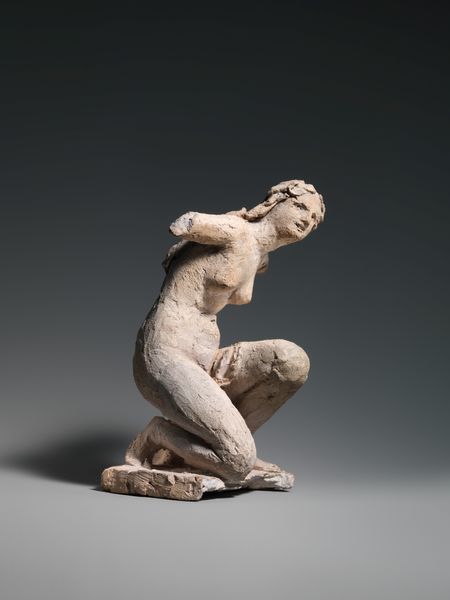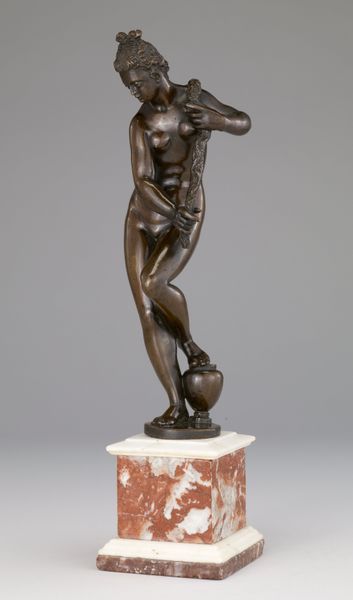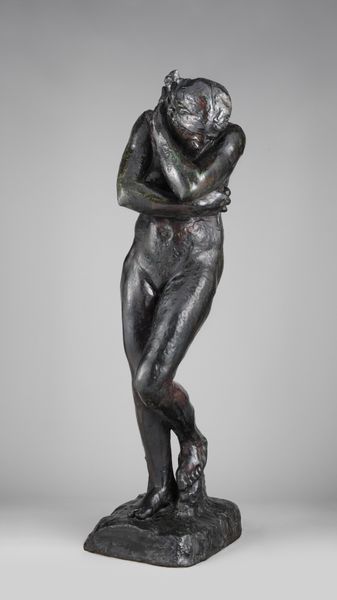
Eve Emportant le Fruit de Mal (Eve Chassee du Paradis Terrestre) 1874
0:00
0:00
Copyright: Public Domain
Editor: Here we have Jean-Baptiste Carpeaux's marble sculpture, "Eve Emportant le Fruit de Mal (Eve Chassée du Paradis Terrestre)" created in 1874. It's a figure in motion, seemingly distraught. What material observations stand out to you in this piece? Curator: I’m immediately drawn to the tension between the high art status conveyed by the marble and the overt display of labor etched into the figure. Consider the texture; Carpeaux doesn’t fully erase the traces of his chisel. This exposes the process, a kind of art-making typically veiled by a highly polished finish. Does this choice influence your experience? Editor: Absolutely. The roughness almost grounds the ethereal subject matter, connecting her plight to a real-world sense of physical making. How does the story itself—Eve's expulsion—intersect with the materiality here? Curator: It's about labor and its consequences. Eve’s act, her consumption, results in her own exile, which could be mirrored by the exile of raw material--marble from the quarry--into art object. Furthermore, the nudity would’ve shocked some, and therefore, it disrupts norms; labor does, too. It invites reevaluation of moral and economic values during Carpeaux’s time. What else do you see as evidence? Editor: The choice of a subject loaded with moral implications is fascinating when seen alongside the display of raw materials. Curator: Precisely. Carpeaux encourages consideration of production, the artist’s labor, Eve's transgression, and our own consumption of the art object, complicating the aesthetic experience through an acknowledgement of its material construction. Editor: So, rather than just seeing a biblical scene, we're meant to reflect on the processes of creation and their societal implications. Curator: Indeed. We must consider this as more than aesthetic form; its value relies greatly on socio-economic context and material practice. Editor: That’s really broadened my understanding. Thanks!
Comments
No comments
Be the first to comment and join the conversation on the ultimate creative platform.

